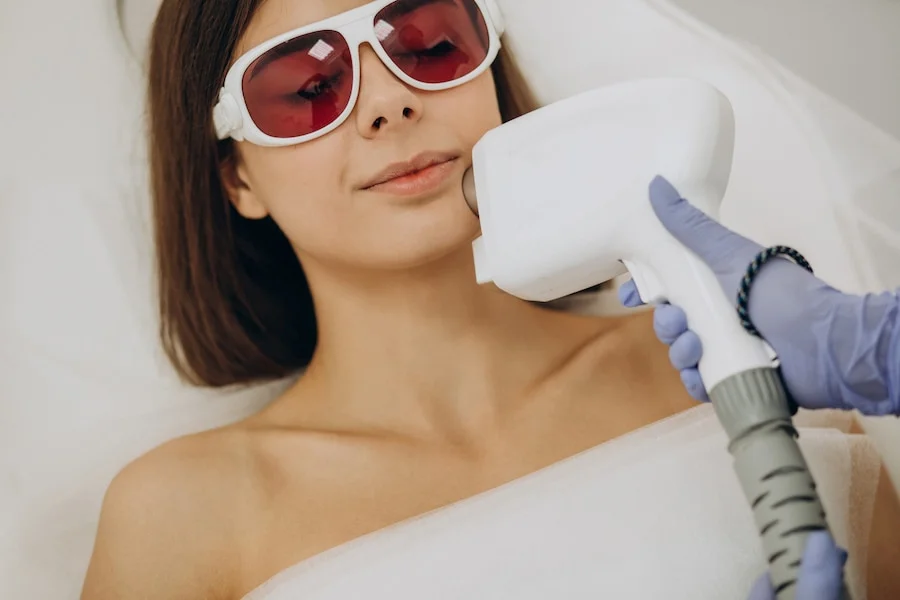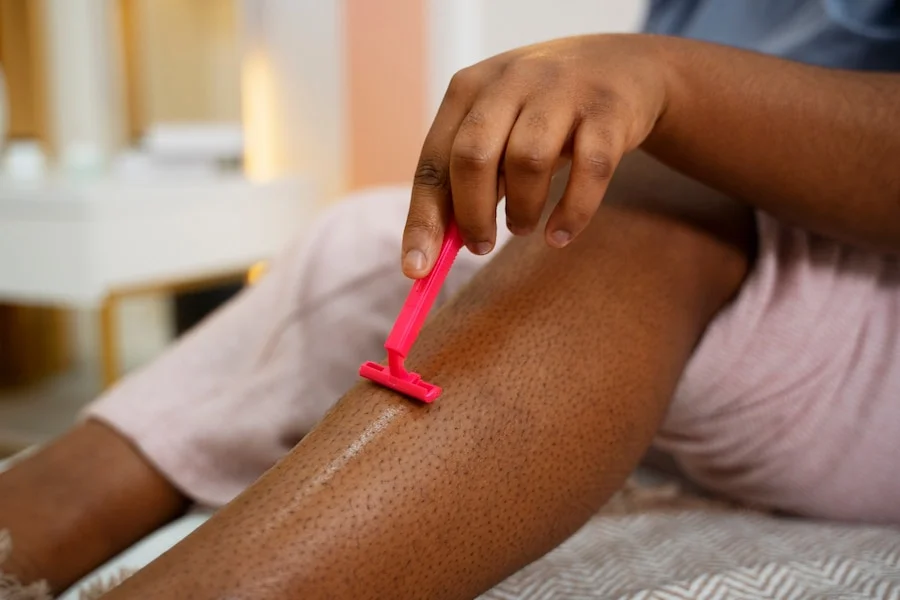As we age, our skin loses its natural elasticity and firmness. Factors like sun exposure, genetics, and lifestyle choices can lead to wrinkles, fine lines, and changes in skin texture.
Skin rejuvenation techniques, such as microneedling and RF microneedling, aim to address these concerns and promote a smoother, more youthful appearance. But is RF microneedling better than microneedling for achieving these results?
Microneedling and RF microneedling are two minimally invasive procedures that have gained popularity in recent years. Both use tiny needles to create controlled micro-injuries in the skin, triggering the body’s natural healing process.
This process stimulates collagen and elastin production, leading to firmer, tighter skin.
While both procedures share some similarities, RF microneedling offers several advantages.
This article will delve into the details of each approach, helping you understand the key differences and which option might be best for your skin concerns.
Table of Contents
ToggleWhat is Microneedling?
Microneedling, also known as collagen induction therapy, is a minimally invasive procedure that utilizes a sterile roller or pen with fine needles.
These needles create tiny punctures in the top layers of the skin, causing controlled micro-injuries.
The body responds to these injuries by initiating a healing cascade. This cascade involves increased production of collagen and elastin, the building blocks of healthy, youthful skin.
Microneedling is a versatile treatment effective for various concerns, including:
- Enlarged pores
- Acne scars
- Uneven skin tone
Yes, you can get microneedling without RF. Traditional microneedling relies solely on the creation of micro-injuries to stimulate collagen production.
While effective, it may require more sessions and offer subtler results compared to RF microneedling.
The newest versions of microneedling tools often come with adjustable needle depths, allowing for customization based on individual needs and treatment areas.
Related: Potenza RF Microneedling For Stretch Marks Treatment
How Does Microneedling Work?
During a microneedling session, a topical anesthetic cream is typically applied to numb the treatment area. The microneedling device is then gently rolled or stamped across the skin, creating controlled micro-channels.
These channels close within hours, but the healing process continues for several weeks, leading to increased collagen and elastin production.
The scientific basis behind microneedling’s effectiveness lies in its ability to initiate a controlled injury response.
The body perceives the micro-punctures as wounds and triggers a cascade of healing factors, including the production of collagen and elastin.
These proteins are responsible for skin structure, firmness, and elasticity.
Microneedling is generally safe when performed by a qualified healthcare professional.
However, improper technique or excessive needle depth can lead to side effects like temporary redness, swelling, bruising, or infection.
What is RF Microneedling?
RF microneedling, also known as radiofrequency microneedling, combines microneedling with radiofrequency (RF) energy. During this procedure, the same tiny needles used in microneedling deliver RF energy directly into the deeper layers of the skin.
The combination of microneedling’s controlled injury and the RF energy’s heat stimulation further enhances collagen production and skin tightening.
RF microneedling differs from traditional microneedling in several ways. First, RF microneedling delivers energy deeper into the skin compared to traditional microneedling, targeting the dermis where collagen production occurs.
Additionally, the combination of microneedling and RF energy creates a stronger stimulus for collagen production, leading to potentially faster and more dramatic results.
The RF energy also has a tightening effect on the skin, further enhancing its youthful appearance.
Unlike SkinPen, which is a brand name for a microneedling device, RF microneedling refers to a specific treatment combining microneedling with radiofrequency technology.
There are various RF microneedling devices available, and Dr. Lian Beauty utilizes Cynosure’s Potenza, a reputable and advanced option.
Related: Does RF Microneedling Burn (Facial) Fat?
Benefits of RF Microneedling
Compared to traditional microneedling, RF microneedling offers several advantages. The combination of microneedling and RF energy leads to more significant improvements in wrinkles, fine lines, scars, and skin texture.
While both procedures cause some temporary redness and swelling, RF microneedling typically heals faster than traditional microneedling due to the lower needle depth required.
Yes, RF microneedling can make you look younger. By stimulating collagen production and tightening the skin, it can significantly improve the appearance of fine lines, wrinkles, and sagging, leading to a more youthful look.
It typically takes 4-6 weeks to see the full effects of collagen production stimulated by RF microneedling, although some initial improvement might be noticeable right after treatment. This process continues for several months, leading to long-lasting results.
After RF microneedling, you can expect some redness and swelling for 24-48 hours. Your skin may also feel slightly itchy or tight. These side effects are temporary and usually resolve within a few days.
Comparing Microneedling and RF Microneedling
Here’s a closer look at how RF microneedling tackles specific concerns compared to traditional microneedling:
Radiofrequency Microneedling Smoothes Wrinkles More Effectively
Microneedling can improve fine lines and wrinkles, but RF microneedling delivers even better results.
The combination of microneedling-induced injury and RF energy heating stimulates collagen production more effectively, leading to deeper wrinkle reduction and smoother skin.
Patient outcomes and before-and-after comparisons often showcase significant improvements in wrinkle depth and overall skin texture following RF microneedling treatments.
In many cases, just a few sessions of RF microneedling can achieve results that might require multiple sessions of traditional microneedling.
Radiofrequency Microneedling Eliminates Acne Scars
Acne scars can be a persistent concern for many individuals. RF microneedling offers a powerful solution for reducing the appearance of acne scars.
The combination of microneedling and RF energy helps break down scar tissue and stimulate collagen production, promoting smoother, more even-toned skin.
Related: Is Potenza™ Good For Acne Scars?
RF Microneedling Can Reach Deeper Skin Layers
Traditional microneedling primarily targets the upper layers of the skin (epidermis), effectively stimulating collagen production. However, it may not reach the deeper dermis, where significant collagen resides.
RF microneedling offers a key advantage in this aspect. The tiny needles used in the procedure can be adjusted to deliver RF energy deeper into the dermis, precisely where collagen production is most crucial.
This deeper penetration allows RF microneedling to address concerns like deeper wrinkles, acne scars, and overall skin laxity more effectively.
By stimulating collagen and elastin production in the deeper layers of the skin, RF microneedling promotes a stronger, more supportive foundation. This results in long-lasting improvements in skin health and appearance.
RF Microneedling Provides Faster, Safer, Long-Lasting Results
While both microneedling and RF microneedling involve some downtime, RF microneedling typically heals faster due to the lower needle depth required.
The combination of microneedling and RF energy generates heat in the deeper layers of the skin, accelerating the healing process.
This heat helps tighten the skin more effectively than regular microneedling by causing the tissue to remodel and become firmer.
RF microneedling also promotes faster skin renewal and healing, with visible changes like new blood vessel formation and tissue repair occurring just four days after treatment.
Unlike lasers, RF microneedling targets only the deeper layers of the skin without damaging the outer layer.
This focused approach avoids common laser side effects like redness, changes in skin color, and scarring, making RF microneedling a safer alternative.
Studies have shown that RF microneedling is effective and safe for various skin treatments, especially when combined with other treatments. It’s also suitable for people with darker skin tones.
The benefits of RF microneedling, like skin remodeling and new collagen production, develop slowly but improvement might be noticeable after a single session, continued improvements can be seen in the following 6 – 12 months.
Most patients require a series of 3-4 RF microneedling treatments spaced 4-6 weeks apart for optimal results.
Depending on the device and treatment area, each session typically lasts between 20 to 30 minutes.
The exact number of sessions needed will depend on your individual needs and treatment goals.
Costs and Value
RF microneedling is usually more expensive than traditional microneedling because of the advanced technology and the faster, more dramatic results it can offer. However, many people think it’s worth the cost for several reasons.
First, RF microneedling often needs fewer sessions to see noticeable results compared to traditional microneedling.
This can mean spending less money in the long run. Also, the shorter recovery time with RF microneedling lets you get back to your daily activities quicker, causing less disruption to your life.
Additionally, RF microneedling provides longer-lasting results, so you need fewer follow-up treatments over time. It also addresses various skin issues at once, like wrinkles, scars, and loose skin, so you don’t need different treatments for each problem.
Potenza RF Microneedling price : See the Full price list at Dr. Lian Beauty Limoges, Ontario
Factors to Consider When Choosing Between Microneedling and RF Microneedling
The choice between traditional microneedling and RF microneedling depends on several factors, including:
- Your specific skin concerns. If you have deeper wrinkles, acne scars, or significant skin laxity, RF microneedling might be a better option.
- Desired results. If you’re looking for faster, more dramatic improvements, RF microneedling is likely the better choice.
- Budget. Traditional microneedling is more affordable, but you might require more sessions to achieve your goals.
- Tolerance for downtime. While both procedures have minimal downtime, RF microneedling typically heals even faster.
Comparing RF Microneedling with Botox and Laser Resurfacing for Skin Rejuvenation
When comparing RF microneedling to Botox, it’s essential to understand how they work. Botox targets muscles to relax them, reducing the appearance of wrinkles.
On the other hand, RF microneedling stimulates collagen production, promoting smoother skin texture over time.
While Botox provides quicker results, it needs more frequent touch-ups compared to RF microneedling, which takes longer to show results but offers longer-lasting effects. The choice between the two depends on your specific needs and preferences.
Similarly, when considering laser treatment versus RF microneedling, it’s crucial to weigh their benefits. Laser resurfacing is effective for deeper wrinkles and sun damage, offering more noticeable results.
However, it requires a longer recovery period. RF microneedling, though less invasive and with minimal downtime, may necessitate more sessions to address deeper concerns.
Consulting a qualified provider or medical aesthetician can help determine the most suitable option for your skincare goals.
Related: Botox After Microneedling: 5 Key Benefits You Need to Know
Suitability and Contraindications
If you have a pacemaker, a history of keloids, an active skin infection, gold threads from thread lifts in the treatment area, or metal implants in the treatment area, you should avoid RF microneedling.
Pregnancy and breastfeeding also make you ineligible for this procedure. Similarly, if you have an embedded electronic device that cannot be turned off or have been on isotretinoin (Accutane) in the past six months, you should wait until six months after completing isotretinoin to undergo RF microneedling.
People with allergies to any component of the treatment, tattoos in the treatment area (due to metal in tattoo inks that can conduct heat and cause skin injury), a history of cold sores (especially if the procedure is on the face), or herpes breakouts in the treatment area should also avoid RF microneedling.
For those with a history of cold sores or herpes, your doctor might prescribe antiviral medication before the treatment to reduce the risk of an outbreak.
Providers usually advise against using topical retinoids at least seven days before the procedure. If you’ve had neurotoxins or fillers in the past two weeks, proceed with caution.
Additionally, if you have an underlying autoimmune disease, bleeding disorder, neuropathy, or a condition that leads to poor healing like diabetes, RF microneedling may not be suitable for you.
Always consult with your healthcare provider to determine if RF microneedling is a safe and effective option for your specific health condition.
Frequently Asked Questions about RF Microneedling
What age should you start RF microneedling?
There’s no definitive answer, but RF microneedling can be beneficial for anyone concerned about wrinkles, fine lines, or other signs of aging skin. Some people start in their 30s for preventative care, while others might wait until their concerns become more noticeable.
A consultation with a medical aesthetician can help you decide if RF microneedling is right for you at your specific age.
How many times can you do RF microneedling?
There’s no limit to the number of times you can undergo RF microneedling, but a series of treatments spaced 4-6 weeks apart is typically recommended for optimal results. Maintenance sessions can be done once or twice a year to maintain collagen production and youthful appearance.
Why am I not seeing results from RF microneedling?
Several factors can influence your results with RF microneedling. These include:
- Individual skin factors: Everyone’s skin heals at a different pace, and collagen production varies. It might take a few sessions to see noticeable improvement.
- Treatment settings: The depth of the needles and the intensity of the RF energy used during the procedure can impact results. Discuss your desired outcome with your healthcare provider to ensure the treatment settings are optimized for your needs.
- Sun exposure: Excessive sun exposure can damage collagen and hinder the effectiveness of any skin rejuvenation treatment. Consistent use of sunscreen with SPF 30 or higher is crucial to protect your skin and maintain results.
- Lifestyle habits: Smoking and excessive alcohol consumption can slow down collagen production and diminish the effects of RF microneedling. Maintaining a healthy lifestyle with proper diet and exercise can enhance your results.
Related: Understanding Sunburn: Types, Risks, Prevention and Treatment
Conclusion
Microneedling and RF microneedling are both effective skin rejuvenation procedures, but RF microneedling offers several advantages.
It delivers faster, more dramatic results for wrinkles, scars, and skin laxity with minimal downtime.
While it’s generally more expensive than traditional microneedling, many patients consider it a worthwhile investment due to its effectiveness and long-lasting results.
Ultimately, the best choice for you depends on your individual skin concerns, desired outcomes, and budget.
Consulting with a medical aesthetician can help you determine if RF microneedling is the right approach to achieve your youthful and radiant skin goals.
Remember, Dr. Lian Beauty offers RF microneedling treatments using the advanced Cynosure’s Potenza system.
We can provide a personalized consultation to discuss your specific needs and determine if RF microneedling is the best option for you.
Quick Links

Dr. Lian Peter, MD, MPH, CCFP, is a Family physician with a passion for aesthetics. In her aesthetic clinic, she provides a wide range of minimally invasive and non-invasive procedures, constantly honing her skills to deliver exceptional care and help patients attain their desired appearance.






